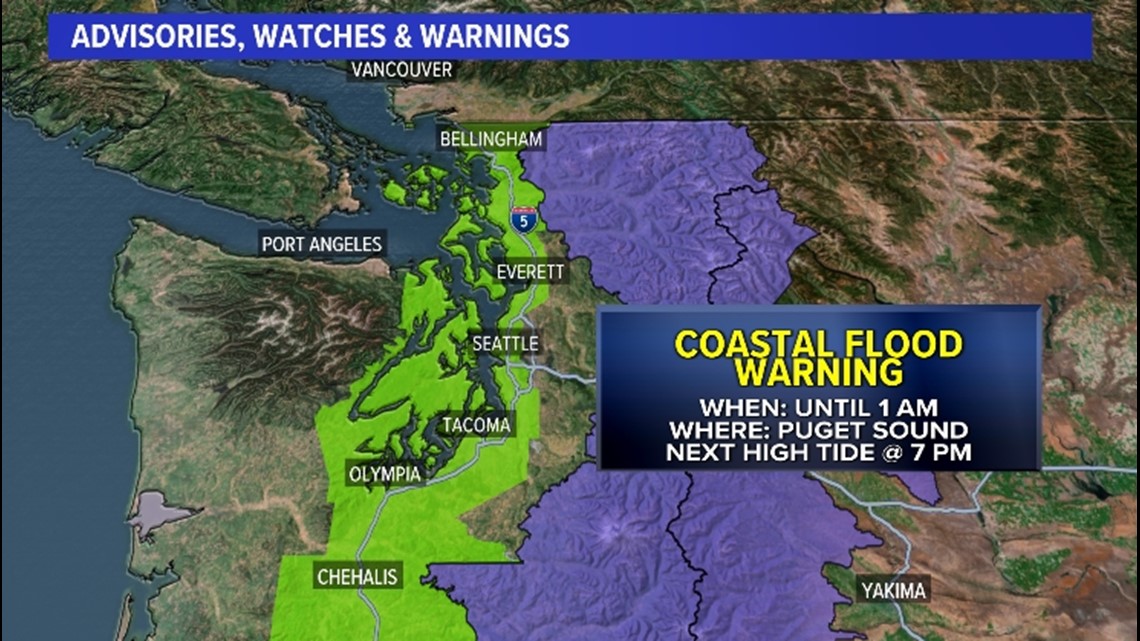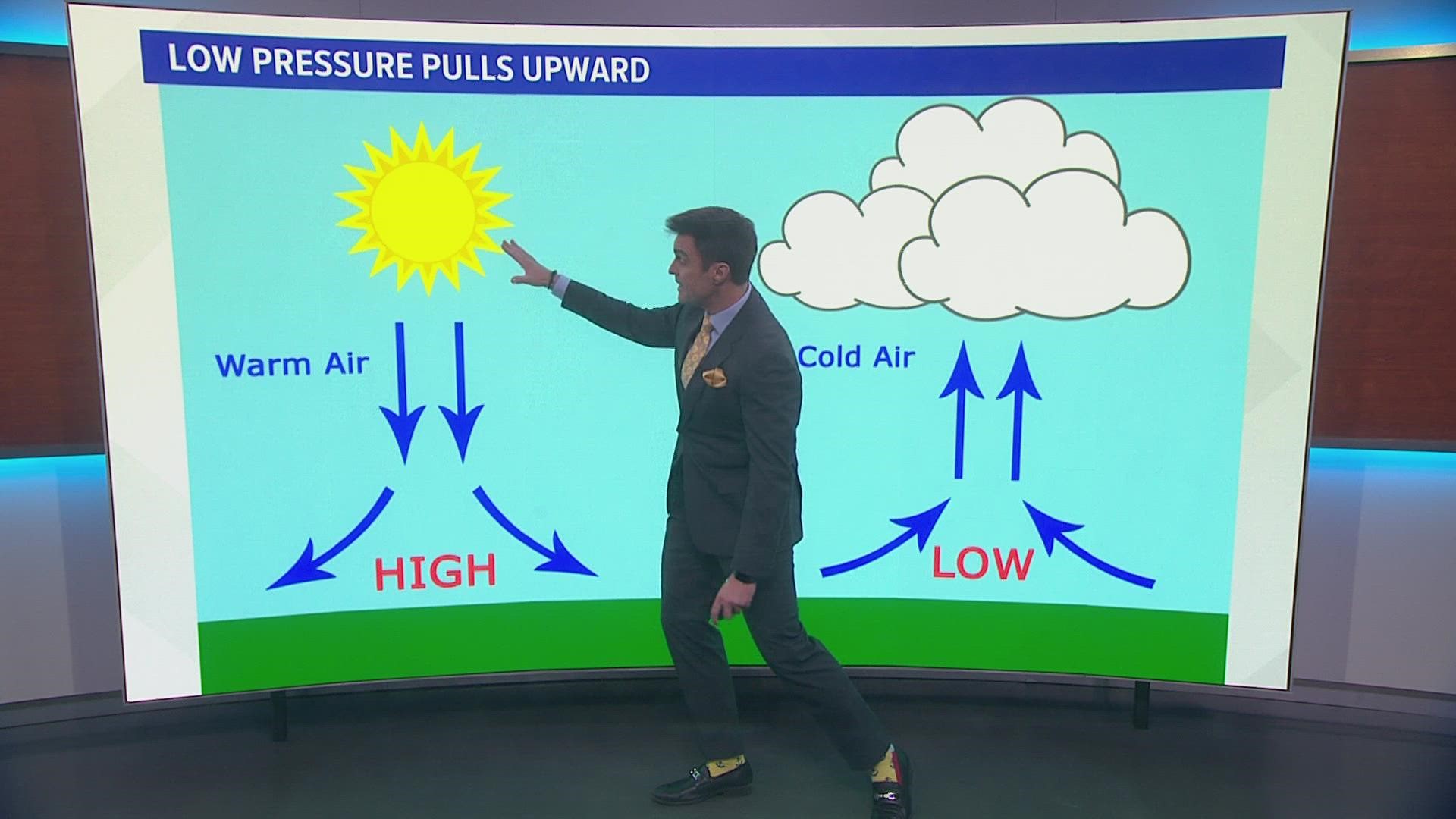SEATTLE — Western Washington fell victim to a double whammy of a king tide and heavy rainfall Tuesday morning, which led to lowland flooding from Anacortes to Olympia.
So, what are king tides?
King tides are a nonscientific term to describe exceptionally high tides, according to the National Oceanic and Atmospheric Administration (NOAA). It’s the highest predicted tide of the year and is above the highest water level that’s reached during high tide on average, according to the Environmental Protection Agency.
Tides, which are long-period waves that roll around Earth, are influenced by the gravitational pull of the moon and the sun. That means higher than normal tides typically occur during the new or full moon, which is when the moon, sun and Earth are nearly in alignment. However, the next full moon isn't for another 10 days.
However, the tides are even higher when the moon is at its perigee, which means it’s closest to Earth in its monthly orbit. When this happens, it’s called a perigean spring tide, as a king tide is more officially known.
This specific criteria makes king tides regular, predictable events. King tides normally happen once or twice a year in coastal areas.
Flooding doesn’t always happen when there are king tides, but when combined with other factors, like strong onshore winds or barometric pressure changes from a coastal storm, NOAA said it could spell trouble.


That’s what happened in western Washington on Tuesday.
For example, in Olympia, officials were prepared for a high tide, but barometric pressure also “bottomed out,” leading to a higher-than-expected tide. Olympia ended up recording a record high tide of 18.4 feet, which was several feet higher than predicted.
Tides are expected to be higher than normal through Dec. 28, according to NOAA's high tide bulletin. Perigean spring tides are also expected to occur Jan. 18-26 and Feb. 18-21. In January, some locations are expected to have their highest tides of 2023.
Check the tide forecast near you on NOAA’s website.

